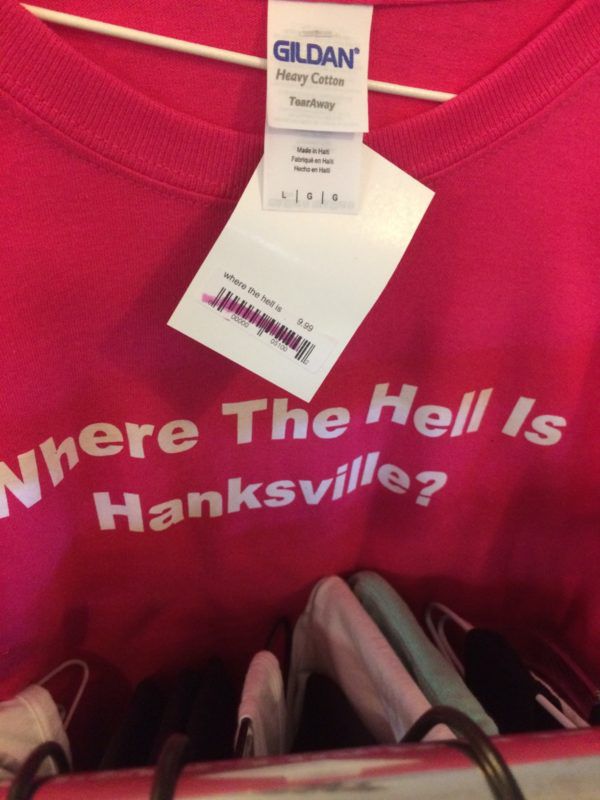For my 80-year-old Dad, a trip down memory lane is not a meandering path along tree-lined streets with picket fences. It’s a ROAD trip.
Literally.
And this summer, he took me along with him–me, and my Uncle, three of my siblings, an oxygen tank, and a cooler full of mandarin chicken wraps.
My Dad, Jim, and his brother, Lynn, were sons of a road contractor, and consequently, their summer jobs did not involve flipping burgers. Instead, as early as age 14, they became part of the crew that built the roads the rest of us still travel across on our own summer vacations.
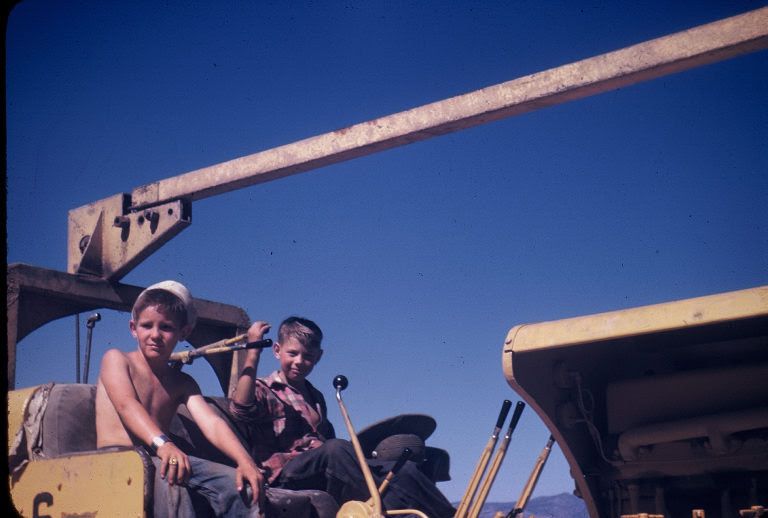
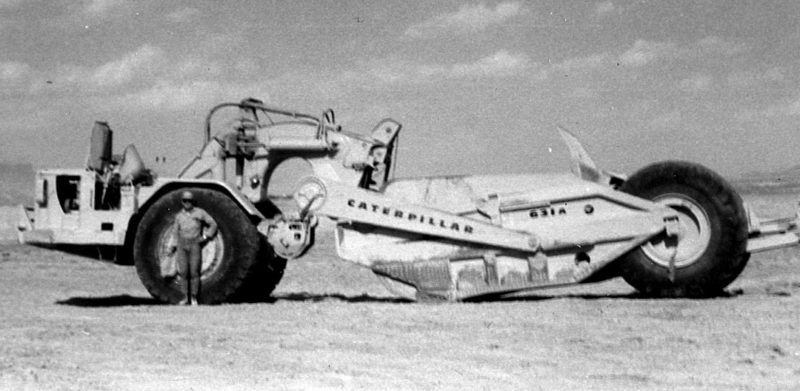
Dad and Lynn wanted us to see and understand some of the legacy that they helped build. Seeing it with our own eyes was the best way to make the lesson stick, so they designed a 3-day jaunt through central and southern Utah, traversing three National Parks, a couple of National Monuments, and a lot of small rural towns in-between.
My goal, when I started out, was simply to spend some time with Dad, doing something I knew he would enjoy. Little did I know it would be one of the best trips I’ve ever been on. When you pack six people into a vehicle and spend 8-10 hours per day on the road together, there is ample time for boredom. But if you play it right, there is ample time for building relationships too, and that was probably the best part of this trip.
In order to keep the travel group small, we created one version of the itinerary which we shared with everyone else in the family in an attempt to discourage them from wanting to come along:
1) First stop will be to look at the concrete foundation of a 19th-century bridge that no longer exists.
2) Then we’ll pause to admire an airport landing strip.
3) We’ll have a photo opportunity at a microwave relay station.
4) We’ll finish out the day looking at maps in a pioneer museum in Bluff, Utah, population 320.
5) Then we’ll have two more days of the same.
That sounded so boring that even my Mom opted out.


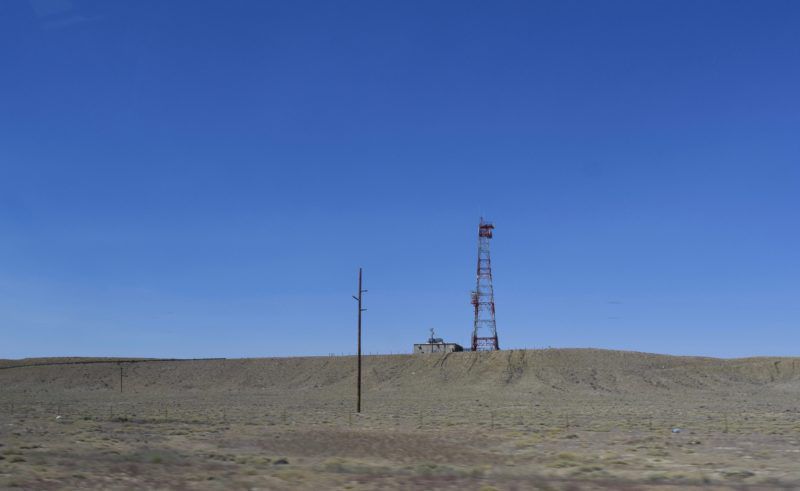

But making the trip seem boring also meant that those of us in the know about the real trip itinerary could all fit into a single vehicle where we could all hear Uncle Lynn’s stories. And if someone wanted to pull over to buy cheese curds or chocolate toffee or peanut brittle, well, no one had cause to complain because there was no schedule, there were no deadlines, and we had the option to just let the adventure invent itself as we moved along.
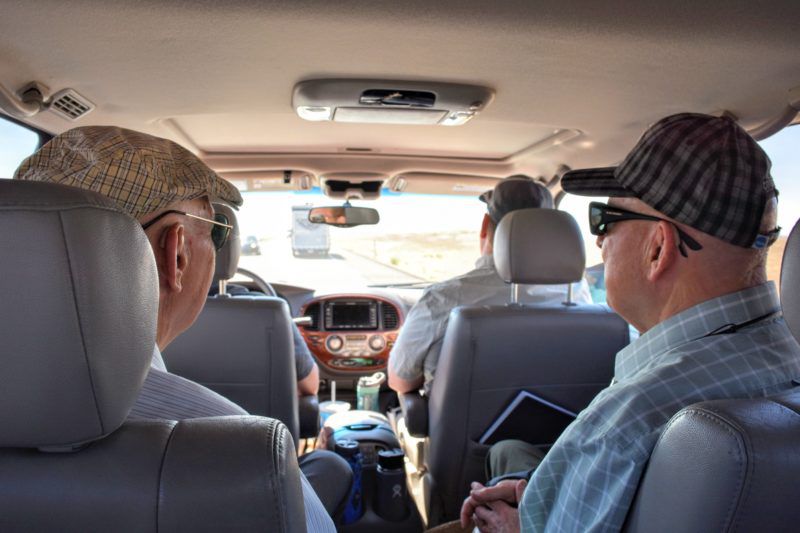
The real trip itinerary was to gather stories–and I figured that if we also got to eat a pretty good steak and some coconut cream pie and snap a few photos in front of Delicate Arch, then the trip would be a win. I wasn’t even close to guessing how much fun I would have. Not only were there hours of stories, there was just so much to see: we hung out in a Navajo hogan, hiked to a half-dozen scenic overlooks, visited a petrified forest, and stared up at impossibly beautiful red sandstone cliffs under an aquamarine sky. The roads Dad and Lynn helped build took us through some of the nation’s most pristine color country. We traversed through Arches National Park, Natural Bridges National Monument, Capitol Reef, and Bryce Canyon during our three-day jaunt. We took in the Hell’s Backbone Scenic Byway, and the Colorado River Gorge.

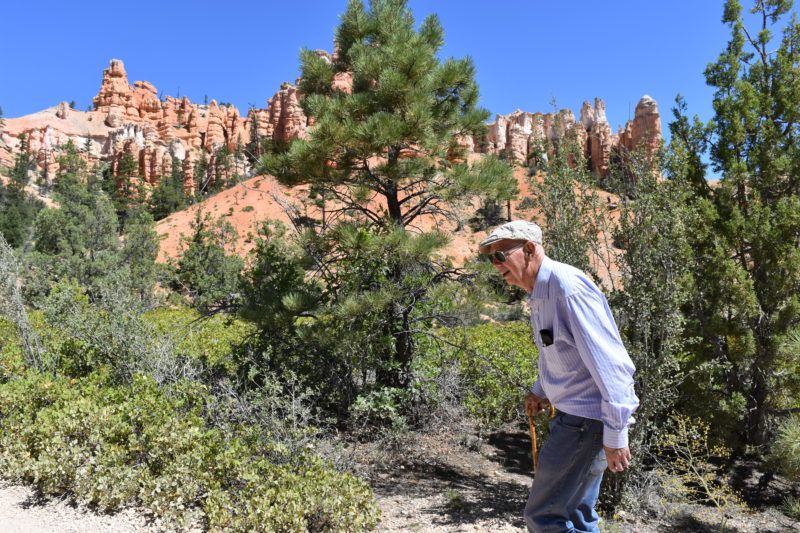
Among other job sites we visited, this Whiting and Haymond road near Bluff, Utah was the source of several stories.
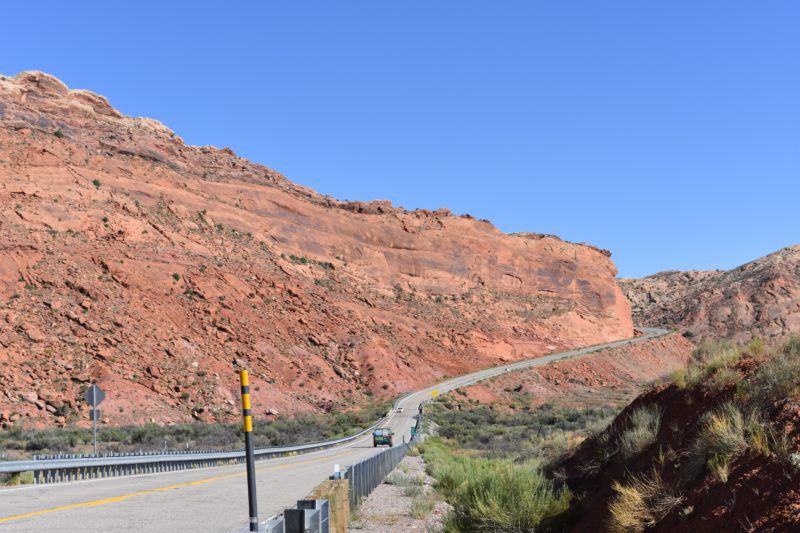
Jim and Lynn described watching the men with jackhammers hanging off from the side of the mountain from climbing cables.

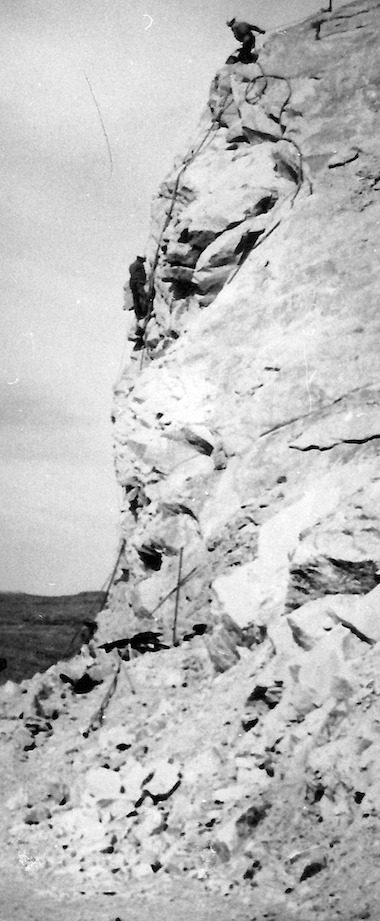
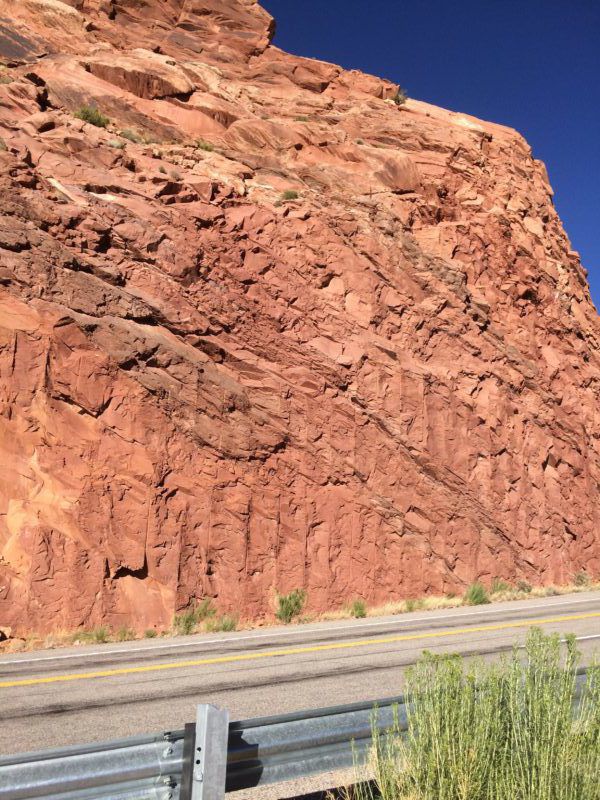
Dad and Lynn told stories about:
- Watching the rock climbers hanging from ropes 500 feet up and simultaneously maneuvering jackhammers to cut away the rock cliff where the new road would go
- Their uncle who loved to throw buckets of water onto hobos riding the trains on the tracks below the bridge the crew was building
- The camp cook who ordered extra vanilla for the kitchen and put some in the pies and the rest into himself.
- Dynamiting the canyon walls and having a rock crash through the windshield and dashboard of their father’s car when he parked too close to the blast site.
- The innovations that the workers created to allow them to build roads in country that was so rough even the survey crews couldn’t access it–roads that would allow the rest of us access to red slickrock formations, pine forests, and jaw-dropping canyons.


As for me, I’ve already started planning the next epic storytelling road trip. I’ll still take my video camera and my tape recorder along on the next one. And my Mom. The rest of you may or may not be invited.
Here’s my home video, complete with really terrible audio and shaky video, of the trip, but now these two bald men with matching pocket protectors can be immortalized so their great grandchildren can appreciate what was built on our behalf:


